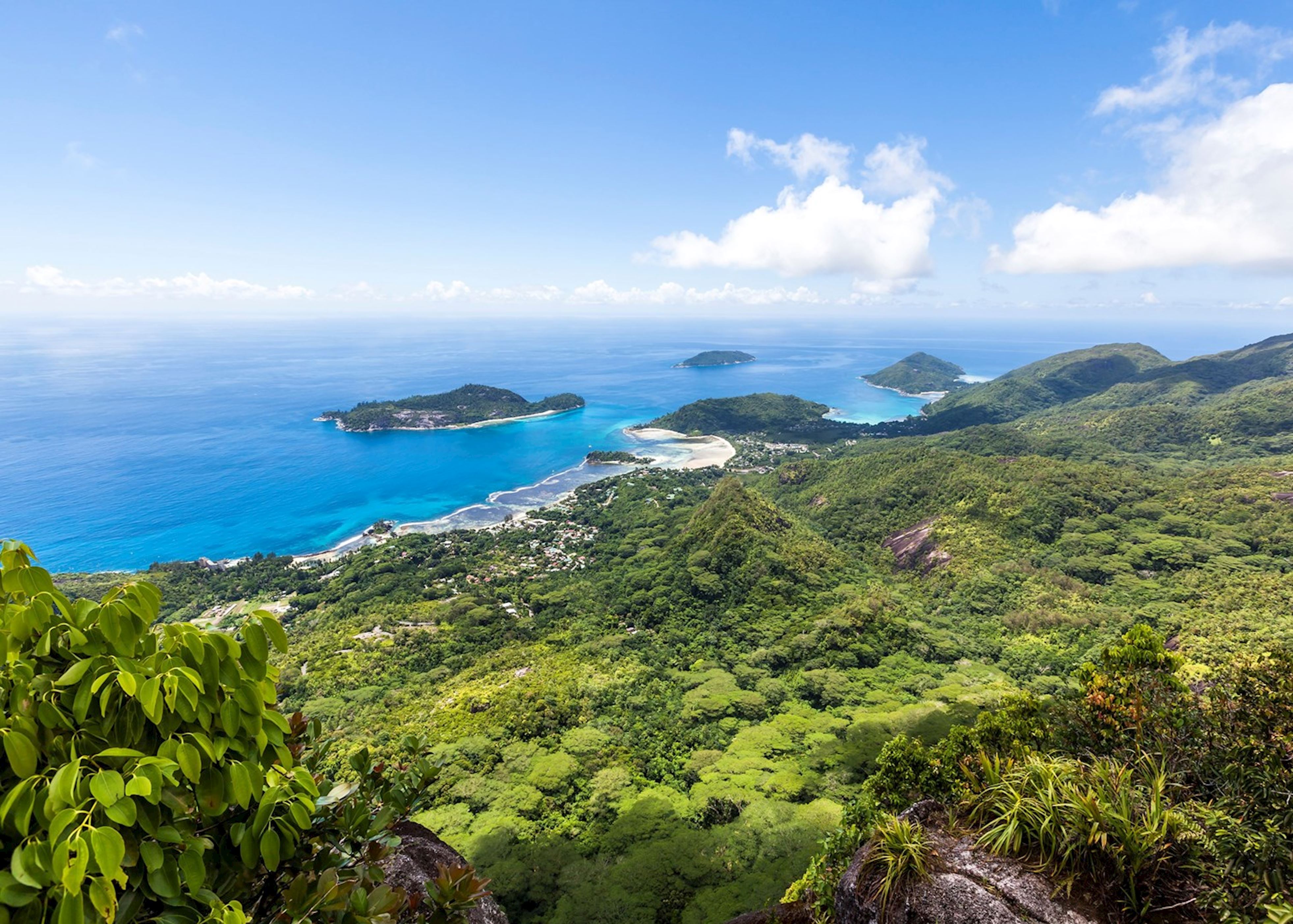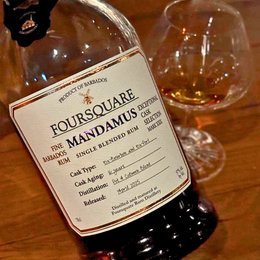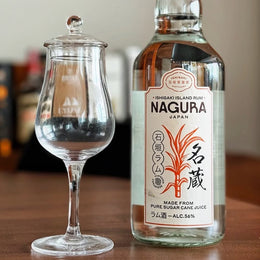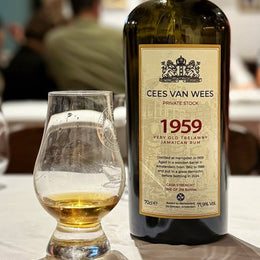
(Image Source: Velier, Jonny Melon)
You’d be easily forgiven for not having heard of Takamaka.
Now, what about Beenleigh? Haven’t heard of them either? Again, completely understandable.
Let’s try Caroni? Yes, of course, if you’re googling for rum reviews, you’re more than likely to know of the famous defunct distillery. Or Hampden? There’s a 50% chance you’re a fan. Last one, how about Demerara? Obviously!


It's almost as it the rum universe has all of four distilleries to some people. (Image Source: Rum Auctioneer, Whisky.fr)
So how’s it that in the last couple of years Velier has seemed to include more unknown distilleries into the mix? A revived rum maker from Queensland, Australia and a small family-owned distillery in Seychelles, an archipelago consisting of 115 islands, with an incredibly small harvest of sugarcane – these aren’t the usual heavy hitters that makes the fans go nuts.
These distilleries seem to share a common theme – they’re fairly young (Beenleigh’s existing operations really only revved back up in 2012, while Takamaka’s operations started in 2002), they are firing on all cylinders in attempting to achieve international recognition, and are relatively unknown.
Yet, intuitively isn’t that the true test of a distributor’s worth? The ability to bring to light incredibly underrated produce. To find the next big thing? To make its customers stop and pause for a second. There’s a saying in the rum-verse, “bottling Hampden is cheating”. There’s some truth to that.

Velier has increasingly been on a sprint of showcasing lesser known distilleries - which while not all were well-received, does underscore Velier's reputation. (Image Source: Rum Auctioneer)
Of course, I’m certainly guilty of some hyperbole. The history of Velier’s works have been far and extensive – Marie Galante’s Pere Labat, Japan’s Nine Leaves, South Africa’s Mhoba, are just a couple more that Velier has brought to light, all fairly similar to what I’ve mentioned regarding Beenleigh and Takamaka.
But the point stands – a reputation is built through the daringness to push boundaries. As they say, “no guts, no glory”. And so we have here today a bottle of 2018 Takamaka, aged for 3 years tropically in Radoux French oak barrels, and distributed under the banner of Habitation Velier.
As is customary of new initiates (the distillery, not you), let’s unpack what Seychelles’ Takamaka is all about.
For starters, let’s talk about the people behind Takamaka.

The d'Offay brothers behind Takamaka Distillery. (Image Source: Takamaka)
The Takamaka brand of rum comes from the Trois Frères Distillery in Seychelles, interchangeably also called the Takamaka Distillery. The distillery was started in 2002 by the d’Offay brothers, Richard and Bernard, whose family were one of the earliest families to call the Seychelles home. Of the cluster of 115 islands, the distillery is located on the east coast of the largest of Seychelles’ islands, Mahè, in a site named La Plaine St Andre.
For the past two decades the brothers have basically learnt to make rum from scratch, largely through trial and error, having started out with a fairly conservative set-up, eventually obtaining from the local government an eighteenth-century national heritage designated building which was then restored as the distillery’s site. That’s quite a feat considering some of their fellow alumni from the Habitation Velier series.

Takamaka's range of rums. (Image Source: Takamaka)
The distillery uses fresh local cane juice to produce Takamaka’s rums – much of which goes into blends of both pot and column still distillate, and some are even blended with the renown Foursquare Bajan rum. Velier’s collaboration with Takamaka is probably the distillery’s first effort at making available internationally their single pot still rum (they do produce a Le Clos range that is supposedly their most premium, but it hasn’t been particularly accessible), obviously the gold tier in Luca Gargano’s rum classification. I think this is one of the reasons Takamaka has not gotten as much credit as they would’ve hoped for – albeit this also makes their rums more accessible to the average drinker. Why compete with the long-established big players for the same clientele after all, no?

A ridiculously gorgeous island, but unfortunately not teeming with sugarcane, although what little sugarcane is grown happens to grow on a more granite type of soil rather than the usual volcanic soil, leading to some interesting flavors. (Image Source: Audley Travel)
What is quite interesting is that Seychelles actually doesn’t have much in the way of sugar cane plantations. According to Bernard d’Offay, the group of islands yields about 85-95 tons of sugar cane per year, with no more than 30 growers in total, most of which are located on Mahé as well, near the distillery itself, while the rest are mostly to be found on another island called La Digue. Yet, a total of 7 different varietals of sugar cane are represented in Seychelles, typically growing on a granite type of soil (versus volcanic that you’d find in other rum producing nations in the area) that is also mixed with beach sand, which the distillery claims offers notes of raw sugar, floral grassiness and sun-baked soil. More broadly, the islands are fairly low altitude, humid and with gentle sea breezes. Without an active sugar industry, most of the cane is turned into baka, translated as “unruly” in Creole, a fermented cane juice beer. Hence, production remains constricted and the distillery started out with cane juice based rum, but has since moved towards importing molasses from around the area. Fermentation times remain fairly short, between 3 – 5 days.

Velier's co-bottlings have lent a much needed boost to Takamaka's international expansion goals. (Image Source: Velier)
For the purposes of Velier’s pair of co-bottlings – an unaged white rum and a 3 Year Old French Oak barrel matured rum from the 2018 vintage, these were distilled using copper Hoga Portuguese pot stills (with no plates in its column) which have now been replaced with a 1,000L Wash still and a 450L Hybrid Spirit Still. The distillery uses French Oak barrels from Radoux, a French barrel producer, whom they met happenstance whilst the representative from Radoux had vacationed in Seychelles.
So with that out of the way, let’s get into something that I find more pertinent. Why is it that people don’t seem to like Takamaka? From my understanding, the distillery hasn’t really been embraced by the community and even under the esteemed banner of Velier, I’ve seen a couple of less-than-affectionate reviews of the co-bottlings.

With a small outturn of sugarcane and no formal sugar industry, the brothers would have to pick their battles. (Image Source: Velier)
Of course, it could simply be that their rums suck, to put it gently. But I suspect more is afoot. It is obviously the case that with purists (which is just that much more concentrated in the rum-verse, as opposed to say whisky), they may seem to appreciate rums and wax lyrical, but really let’s not kid ourselves, they like a handful of the same rums – Caroni’s, Hampden’s, Demerara’s, Foursquare’s. It’s not a bad thing, it’s just what it is. But it is exclusionary of a much deeper, and wider world of what the rum-verse has to offer. Which is to say they’re already not all too fond or receptive of newer stuff – so that’s an obstacle right off the bat.
Rather than compete with the establishment, would it not make more sense for the young Takamaka, to strategise around those just waddling their feet into the world of rums? Cocktail-designated rums and flavoured and spiced rums seem the intuitive pick. When you’re the little guy, it’d do you little good to follow the big guy’s playbook, you see.

The distillery's home at La Plaine St André, on the island of Mahé, the biggest of Seychelle's 115 islands. (Image Source: Takamaka)
But is the distillery itself wholly faultless? I think they had to pick their battles. With quite a small outturn of local sugar cane, the lack of a commercial sugar industry, and only two decades of experience that was largely marked by trial and error, the d’Offay brothers haven’t had a lot on their side. Their importing of molasses, which could be seen as making the rums less of Seychelles origin, while their choice to blend their rums with Foursquare could be construed as insecurity regarding the quality of their produce and riding off the tailcoat of a widely beloved brand, and with most of their bottlings either flavoured, spiced or simply not in accordance with the ethos of “pure pot still”, they’ve kind of provided some fodder for their critics. Most of which is simply bucketed as “they don’t taste good”.
Yet, if a bottler as renown as Velier would back them up and put its reputation on the line, surely Luca must have seen (or tasted) something. Don’t misread that as everything Velier-labelled being stupid delectable – no, let’s not put the cart before the horse here. I am simply saying that perhaps it’s worth another look.

I'm not sure how many distilleries consider that their rums may get stuck in the Suez Canal. (Image Source: Cambiaso Risso Group)
As if things could not get any more difficult for the brothers, the Velier co-bottlings were due in the middle of a time when the word “unprecedented” was peak colloquialism. The pandemic resulted in lockdowns and supply chain problems. You’ve heard it all way too many times. But alas, the brothers seem to have been cut no slack – first a slight mishap during the racking process meant that one of only two new French Oak Radoux casks the distillery had was spilled, resulting in less liquid left for bottling, and then when the brothers finally found a ship to take their bottles, it got caught in the famous Suez Canal jam. Not the most ideal start.
In any case, today we’re going to try the 2018 French Oak barrel aged 3 Year Old Takamaka, bottled at 60.8% ABV, tropically aged throughout. Take note that this was produced with the old stills, it is fully pot still distillation, and produced using cane juice.

(Image Source: Casa del Tequila)
Takamaka 2018, Habitation Velier, 3 Year Old, 60.8% ABV - Review
Color: Gold. Olive oil.

Lovely bouquet of aromas - lots of florals, honey, sugar-heavy fruits and a light vegetal quality. (Image Source: Tom's Guide. Jessica Gavin, BBC Good Food, Salt Magazine)
On the nose: Heady, viscous, lots of florals – lilacs, geraniums, hyacinths; almost like walking through a bush of flowers, really. Lots of honey, it’s evidently sweet, almost nectar-esque. Very fruity as well, with lots of peaches, mangoes, mangosteen, and also a vegetal stalk sort of chlorophyll-driven note. It is quite restrained in its heat, but you can feel it being held back, just around the corner.
On the palate: A lot thinner than you would expect from what its aromas forewarned, but still quite the syrupy flavour, with the same florals, and fruity but more on the side of orchard fruits – apple skins, it is strangely similar to Calvados.

More on orchard fruits, specifically apple skins, baking spices, tart blackberries, and a funkier off note of burnt food or maybe petrol or even varnish. (Image Source: Healthshots, BBC Good Food, Healthline, Goody Feed, AsiaOne)
Baking spices, blackberries, it gets alittle tart and astringent, while the oakiness makes an appearance, pushing it a tad too far. There’s a slight burnt taste to it (locally we call that chao tah), which I assume is from their charring of their Radoux casks. This gives it a somewhat oily dimension that pulls apart from the spices, and puts you in a strange petrol note. Or maybe furniture varnish?

Vegetal and oaky astringency gives the finish a receding bitterness, although there was a sudden final pop of perfumery flowers. (Image Source: Inlife Healthcare, The Grit and Polish, HomelyVille)
The finish: The thinness stands out, it recedes with more astringency and a vegetal note that gets alittle acidic. A final burst of perfumery florals before the show closes. Fairly short, all in all.
My Take
This rum delivers the florals in spades, sporting a really gorgeous bouquet on the nose, but really it’s the palate where it sort of starts to show some cracks in the armor. It’s a lot lighter and thinner than you’d expect, with not the best integration of flavors, sort of splitting into several segmented bands of floral, bitter and tarty. This also carries through to the finish where it recedes into a somewhat charred and bitter aftertaste, even if there was a pretty welcomed burst of florals towards the end.

They haven't nailed it but I'd much rather call it a work in progress than call it quits on Takamaka. (Image Source: Velier)
That said, having seen a couple of reviews around, I would say that some of its critics are being too harsh (and they’ll probably say I’m too lenient, I'm probably most aligned with Secret Rum Bar), but I do believe there’s lots of potential here for beefing up. Some of the most beloved notes – floral and fruity, are here, whilst the less desirable bitterness and astringency, can be withheld if they reduce the charring on the barrel. Right now, the brothers are on Medium and Medium +, perhaps go for Light? Perhaps what is trickier here is giving the body more heft, which could be the reason that prompted the change in distillation stills.
My Rating |
🛤A valiant effort with good promise. They're on the way. Don't count them out just yet. |
With so many moving parts, I hesitate to call a verdict just yet. Should another opportunity present itself later down to try produce from their new stills, would I go for it? For sure.
 Don't count them out just yet. Takamaka Distillery at La Plaine St André (Image Source: Absolute Seychelles Magazine)
Don't count them out just yet. Takamaka Distillery at La Plaine St André (Image Source: Absolute Seychelles Magazine)
Distilleries don’t become great in a flash, it takes persistence and continued experimentation. I should know – I’ve never ventured remotely close to starting a distillery because I simply don’t have the sheer persistence and continued desire to experiment as the d’Offay brothers do.
For the critics, I say, don’t benchmark them to the Caroni’s, Hampden’s, Foursquare’s and Demerara’s of the rum-verse. Enjoy the journey as the brothers continue to push forth. It’s a valiant effort, we can all agree to that.
Kanpai!

@111hotpot







